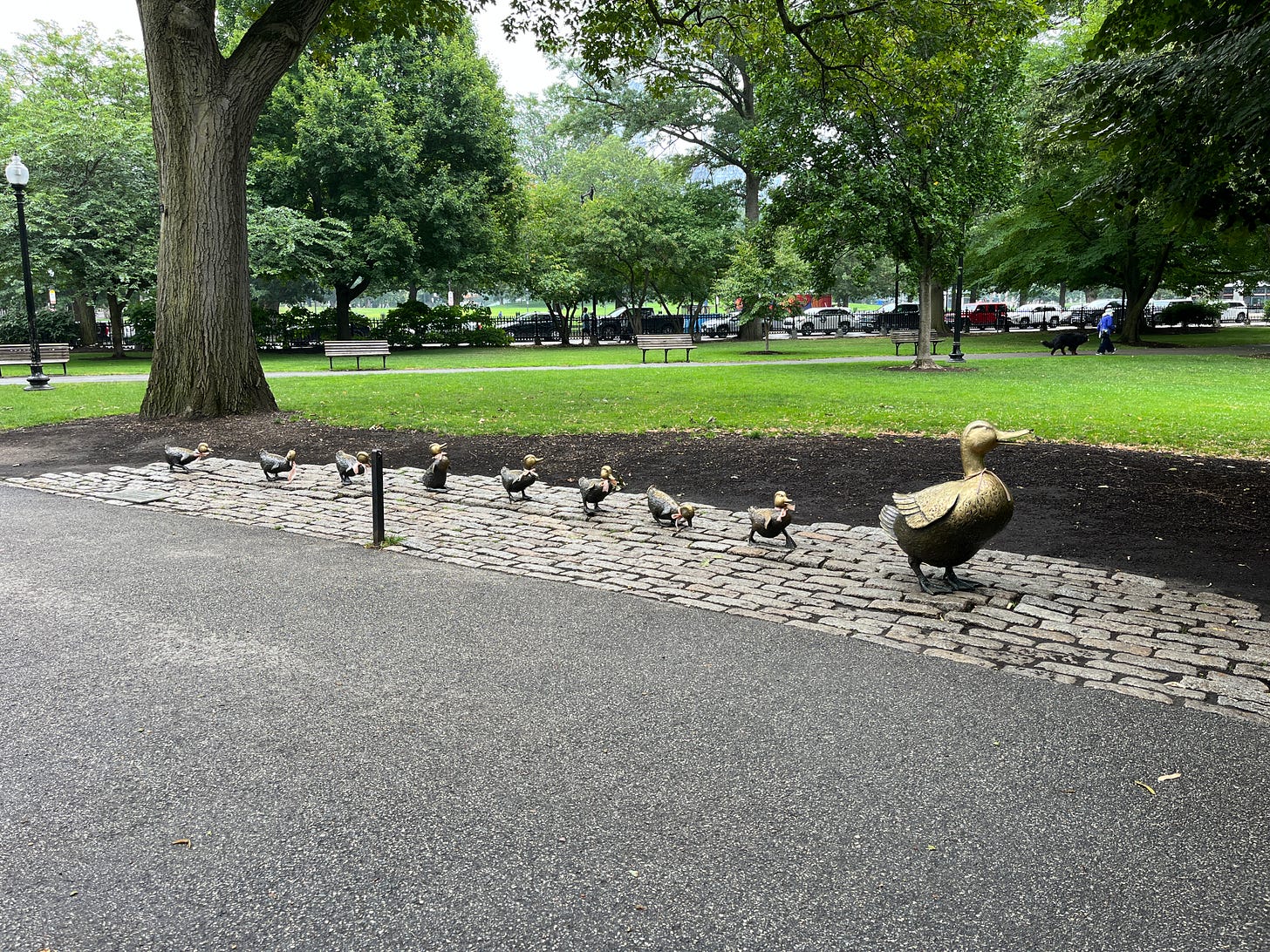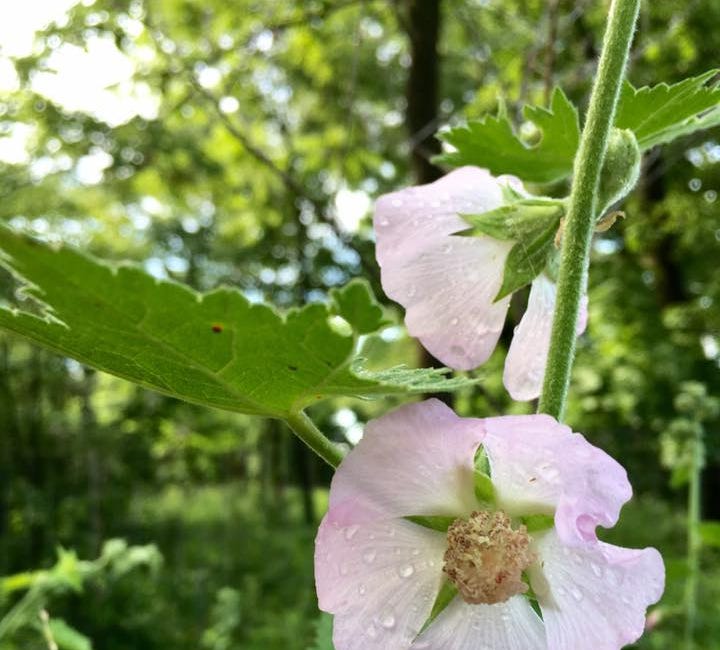A walk around Boston Common
Sparrows, swans, and ducklings.
Many people visit Boston with colonial history in mind, a visit to the Museum of Fine Arts, or an Italian dinner in the North End. Others arrive thinking about the city’s role in the Sparrow War that raged for decades in the 19th century. In previous posts, I wrote about how the first-ever meeting of the American Ornithologists’ Union in 1887 included an agenda item focused on the mighty House Sparrow. The conversation continued for years: were sparrows a blessing or a nuisance?
House Sparrows were brought to the United States as early as 1851 in Brooklyn, N.Y. This was an era when it was thought that “acclimatizing” foreign species to new places might provide benefit to the ecosystem by controlling pests.
And Boston was sort of ground zero in the Sparrow War. City forester John Galvin attested to the sparrows’ efficacy at gobbling up caterpillars on Boston Common in an 1877 story in Forest and Stream. He added that “without hesitation, the sparrows do not molest or interfere with any other bird,” countering long-standing claims that the birds were particularly aggressive toward robins and bluebirds (spoiler alert: they were aggressive — to bluebirds more than robins).
With all this in mind, I recently made a trip to Boston Common, the oldest city park in the country. It was a soggy day, and a bit chilly as I emerged from the T’s Red Line at Park Station. One of the only sounds on the common was the wind rustling through the leaves of the trees scattered about the property. I found my target species, the House Sparrow, right away. It was in the shadow of the Massachusetts statehouse, in the northeast corner of the common.
A few other birds seen were American Robin (eight), European Starling (another introduced species), and a few Rock Pigeons (also introduced).
Then we walked west toward the Boston Public Garden that abuts Arlington Street. There was another target sighting: the swan boats made famous in E.B. White’s The Trumpet of the Swan. If you don’t recall the connection, let me refresh your memory.
Louis was a Trumpeter Swan hatched in Montana. However, Louis didn’t have a voice. A local boy named Sam befriends Louis, who eventually learns to read and write and to play the trumpet. After a stint as a bugler at Sam’s summer camp, Louis eventually makes his way to Boston where he gets a job playing the trumpet at the Public Garden. There he swims and plays while visitors enjoy the swan boats. He earns $100 per week and has a private suite at the Ritz Hotel, where he orders room-service watercress sandwiches. But I digress…

Before departing the Common and the Garden, there were Ring-billed Gulls, Red-winged Blackbirds, and Common Grackles. A Double-crested Cormorant flew over from the Charles River also.
There also was an iconic work of public art, the sculptures in tribute to Robert McCloskey’s Make Way for Ducklings. It’s a wonderful story, though my favorite McCloskey work is 1948’s Blueberries for Sal. How I wish there was a sculpture for that story of a bear cub and human toddler whose parents mix them up in a blueberry patch.

In a place known for its colonial history, I was reminded that given its location, with so many gardens, trees, and waterways—and its literary connections—that Boston is quite the birding town also.
If you liked this post, you also might like:
Saving the Kankakee Mallow
On a small island in the Kankakee River, about 60 miles south of Chicago, there exists a wildflower found nowh…
I keep all posts free thanks to the generosity of paid subscribers. If you’d like to become a paid subscriber please sign up here. Thanks for your support.





You take us around the area and not only introduce us to all the birds but remind us of The Trumpeter Swan story. Here on the other side of the Atlantic pond and on the other divide Wordpress I have a post I regularly do on Birdplaces. And a trumpeter swan and cygnet at the Martin Mere Wetland, unfortunately in captivity. Glad those house sparrows are well as there was a decline here in the UK.
The Trumpet of the Swan is just the best book. Our family read it over and over. Our boys loved Louis! With an almost 5 year old grandchild, it’s time to start the readings of all of EB White’s books again.